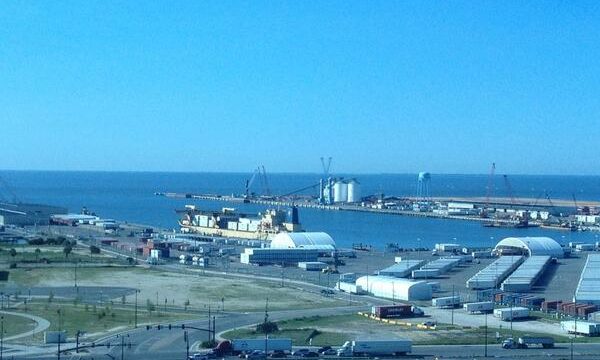Federally funded Port of Gulfport continues its financial sink

JUST ADD JOBS: The Port of Gulfport received $580 million after Hurricane Katrina for rebuilding efforts.
By Steve Wilson | Mississippi Watchdog
According to a recent audit, the Port of Gulfport continues to bleed cash despite receiving $581 million from the the federal government to rebuild after Hurricane Katrina.
The port had an operating loss of $10.3 million in 2014, an improvement from previous years, when the port lost $13.6 million in 2013 and $36.1 million in 2012.
With the departure of Chiquita at the end of November for New Orleans, the losses will likely continue. According to the port’s budget for 2015, the facility earned $4.6 million from maritime services — wharfage, dock fees and crane rentals — in 2014 and is predicted to earn less than $3.6 million in 2015.
“When that (Chiquita) goes, that’s going to make a bigger difference,” said Howard Page, port campaign coordinator for the Steps Coalition. “That’s really going to knock down those dockage and wharfage fees — those revenues — are really going to go down.”
The port’s other big tenant, Dole Fruit, might not be far behind. Dole Foods Chairman and CEO David Murdock told the Associated Press in July his company won’t sign an extension of its lease, which expires in 2017, until the state shows more progress on the expansion of the port’s West Pier.
Most of the $581 million in federal money came from the Housing and Urban Development ($564 million), which were Community Development Block Grant Disaster Recovery funds reallocated to the port project by the Mississippi Development Authority. Under the conditions of the grant, the port was supposed to maintain 1,300 jobs and add 1,300 more workers once renovations were complete in 2016, 11 years after the storm.
However, a 2013 Performance Evaluation and Expenditure Review by the state showed the port is falling short of its job creation goals and likely won’t meet them. The addition of McDermott International’s new spoolbase pipe fabrication facility to the port will add 100 permanent jobs to somewhat make up for the loss of Chiquita’s permanent positions, giving the port 814 workers, down from 1,200 in 2010.
If the port can’t maintain and create 2,586 jobs, the federal money will likely have to be returned.
“I don’t think they can,” Page said. “What HUD tells you is that when the project is over with, then they will come back and review the project and decide whether or not to take the money back. I think that’s very unfair to Mississippi. What’s going to happen is we’re going to spend all of this money, not create any jobs and be left where they’re (HUD) going to decide whether or not to take the money back.”
The problems facing the port, Page said, are myriad. The port doesn’t have a dedicated interstate line for container-carrying trucks and its rail lines are congested since downtown Gulfport is adjacent to the port.
And the port isn’t deep enough to handle the added traffic of larger container ships.
The port is being dredged to its specified depth of 36 feet in a project that will be completed in early 2015. Even with the new deeper draft, the port still can’t handle the deep drafts of Panamax or post-Panamax ships — the largest ships that can use the present locks at the Panana Canal — because they both need a depth of 41.2 feet or deeper. Those larger vessels are the future of the shipping trade and are incompatible with the port’s shallower draft.
Get regular updates on Mississippi through our Facebook or Twitter accounts







